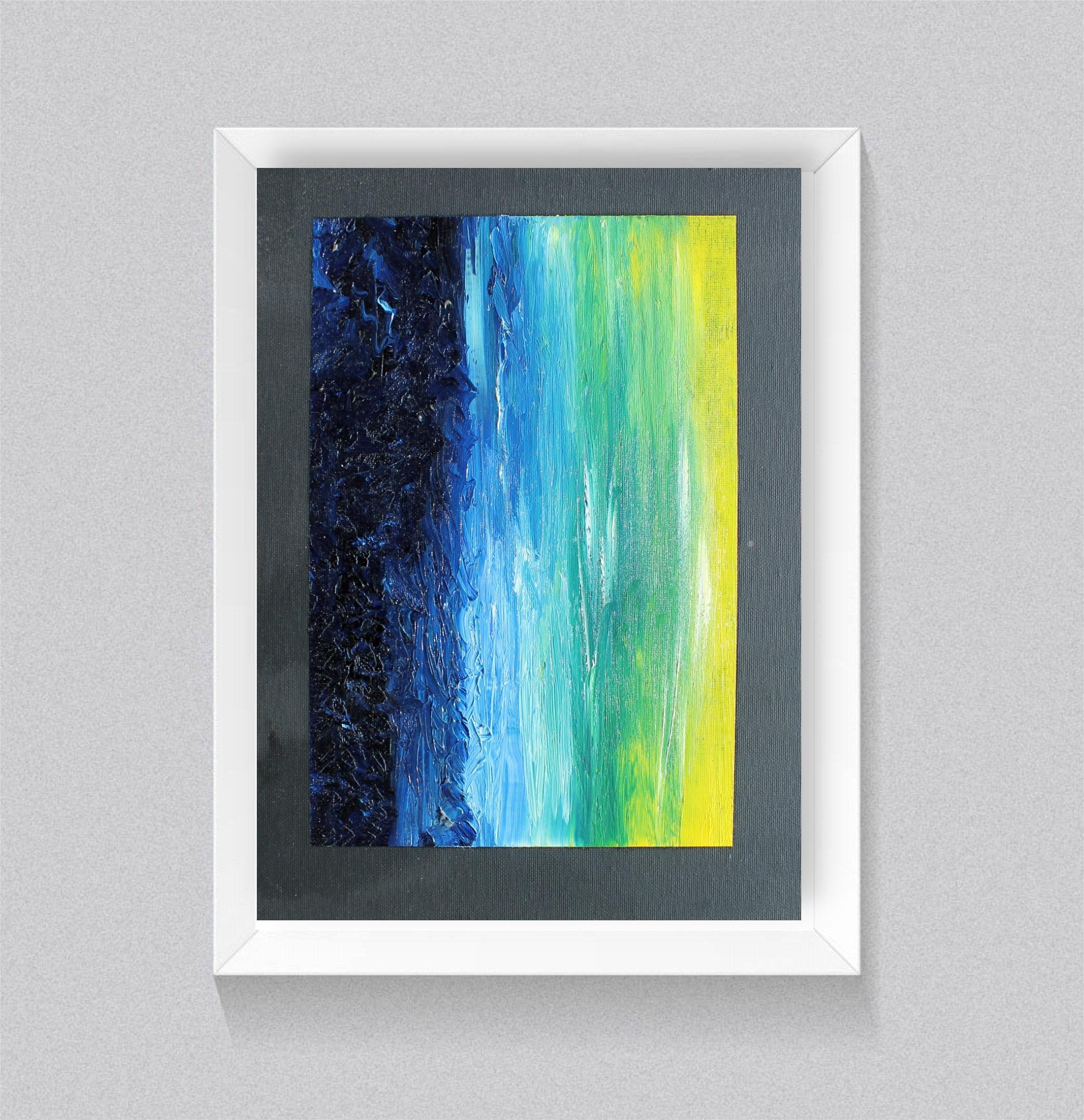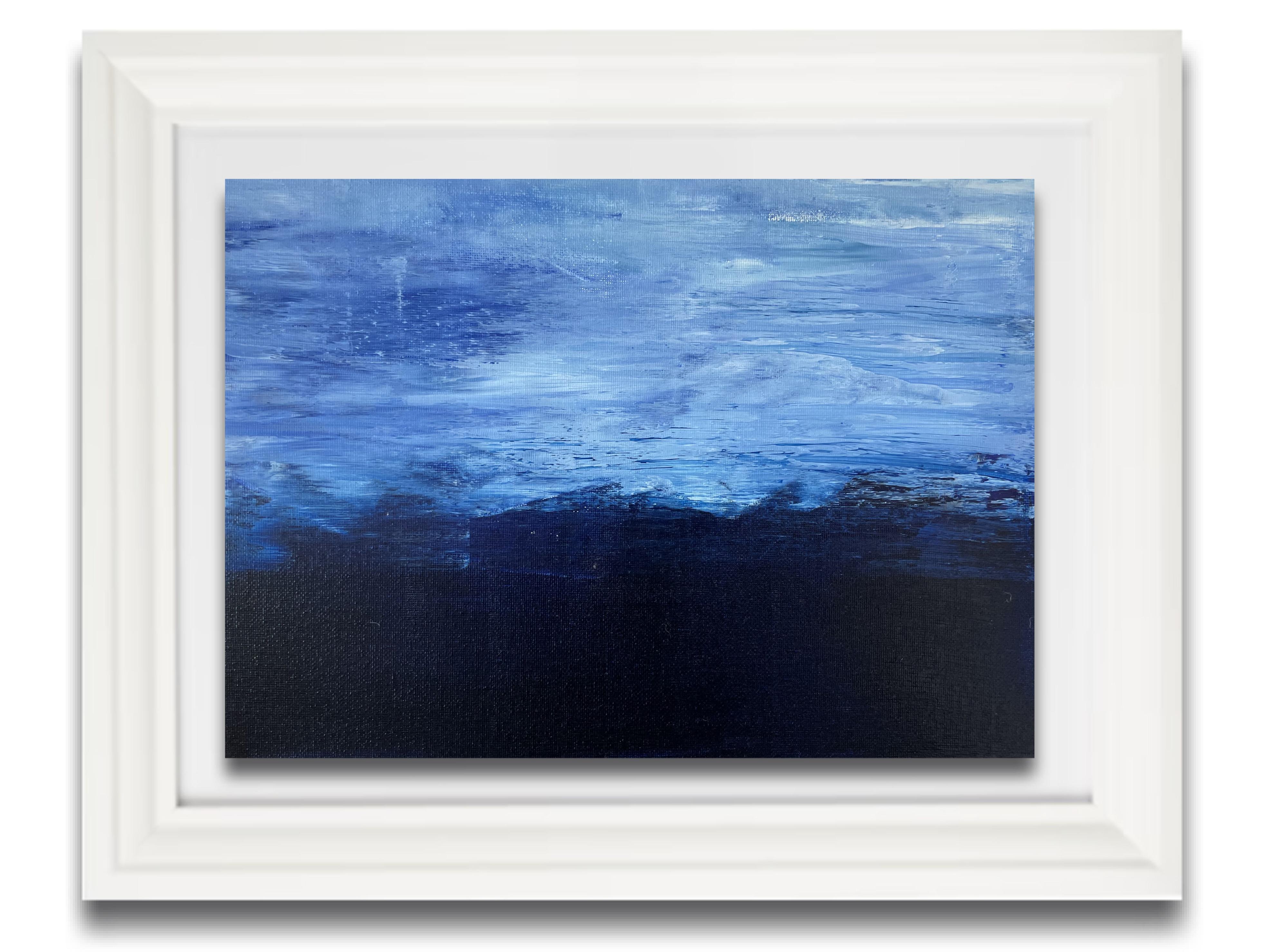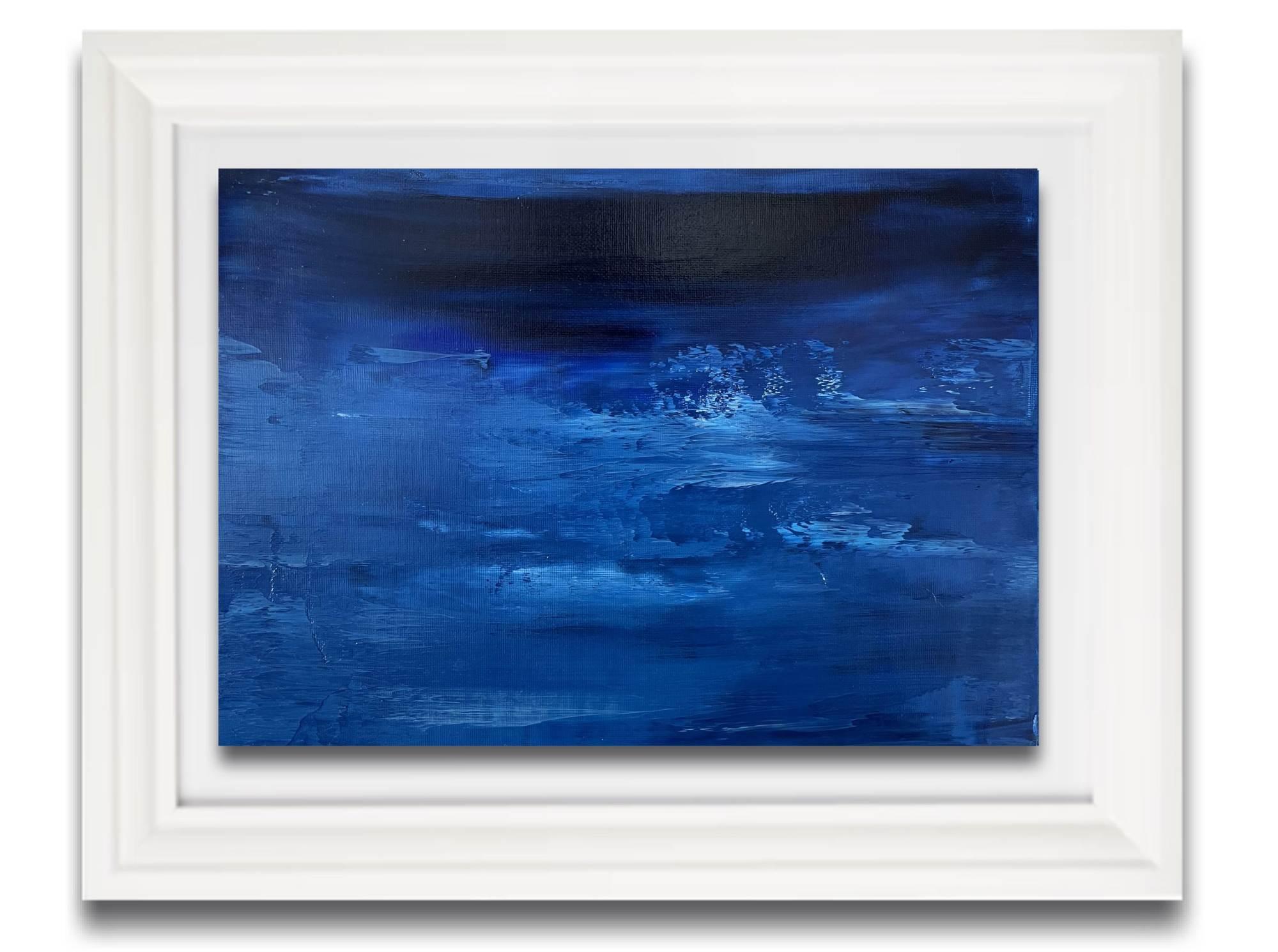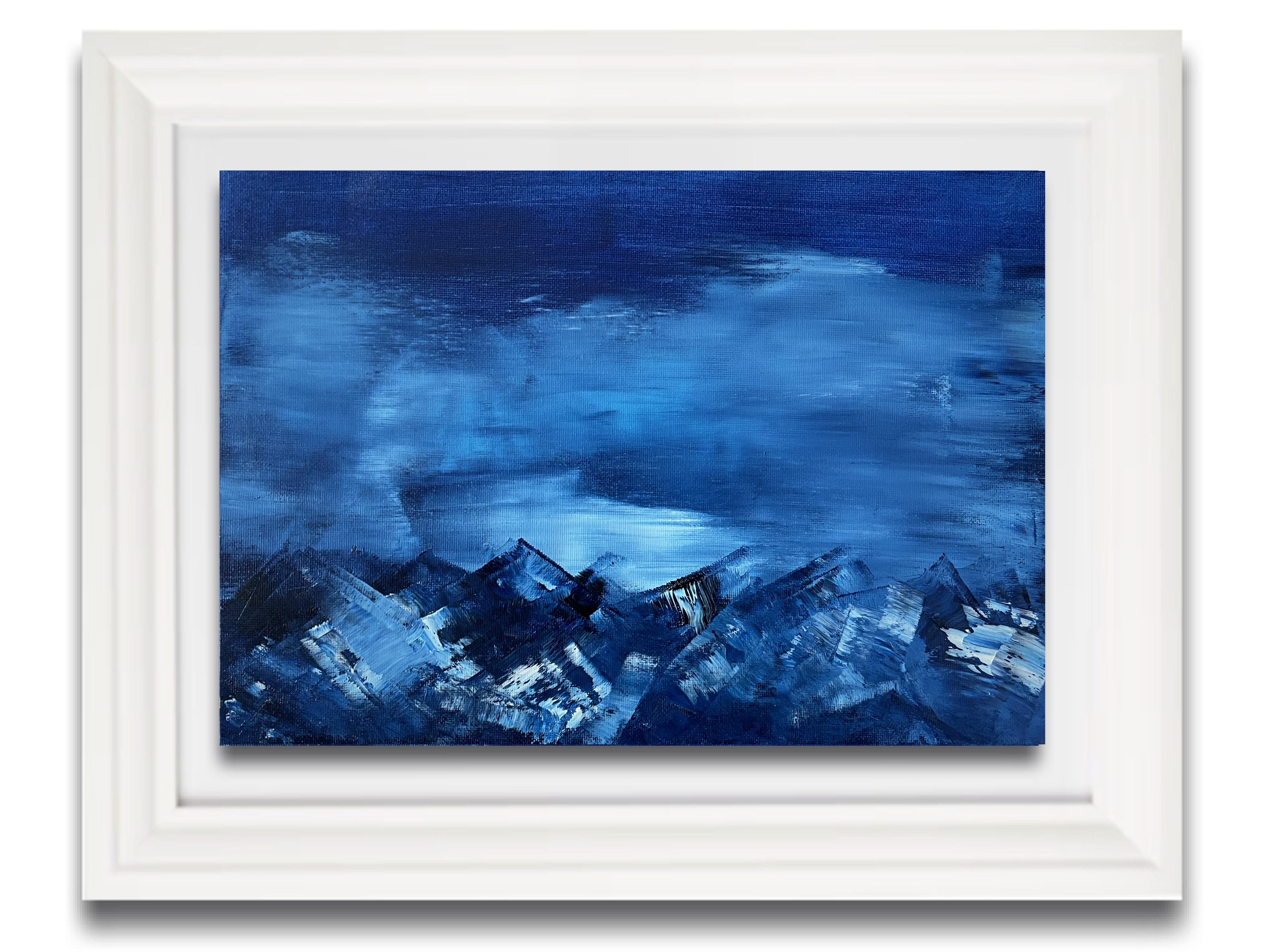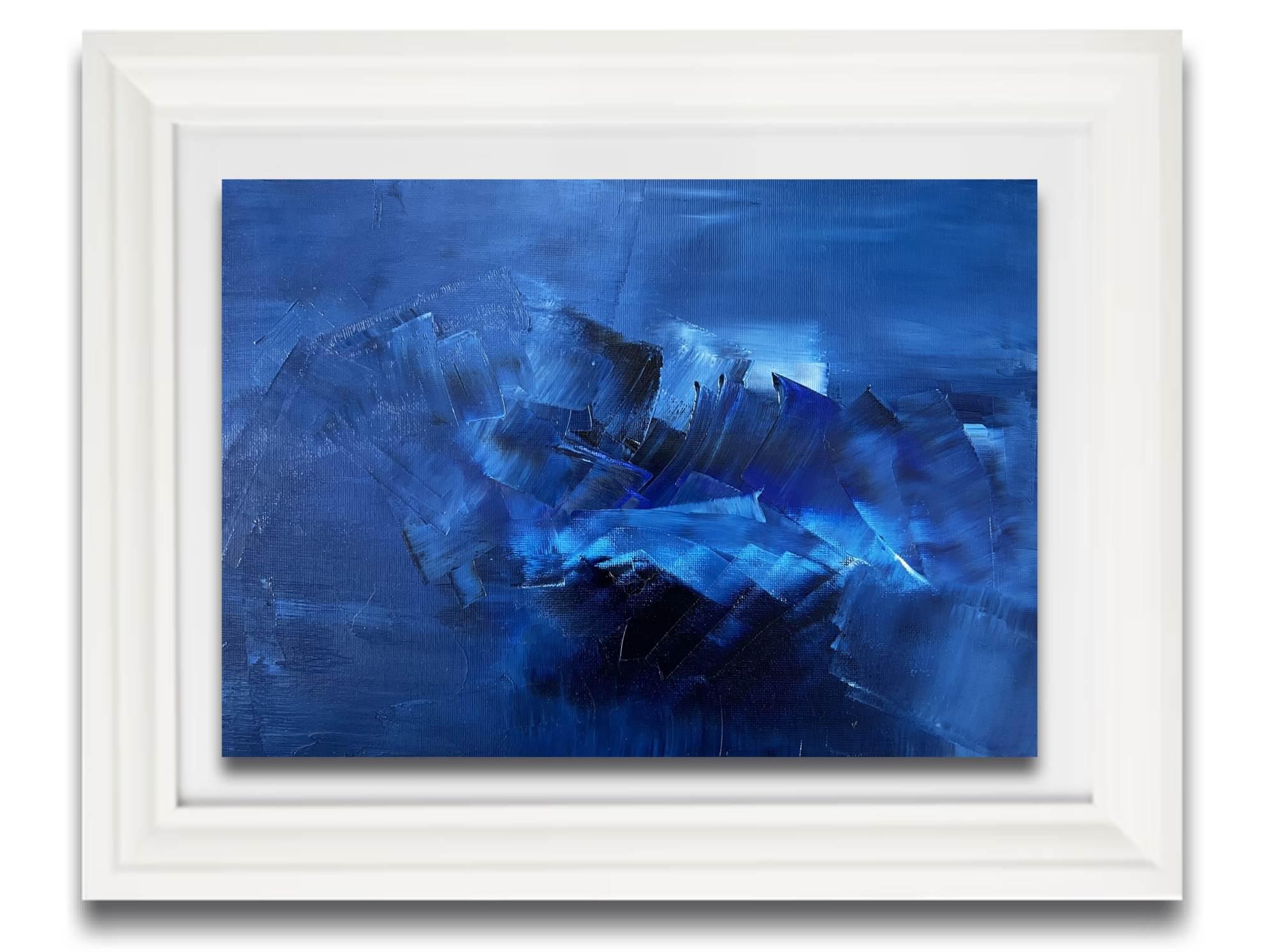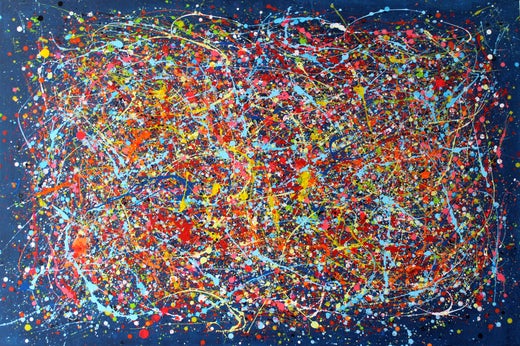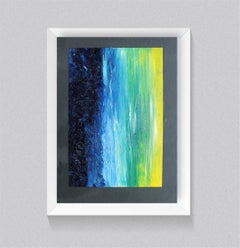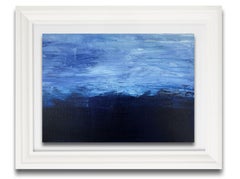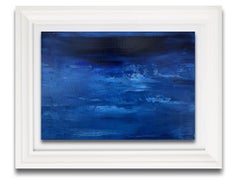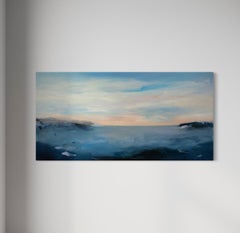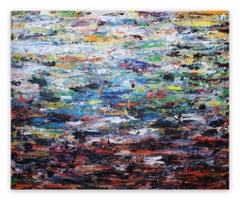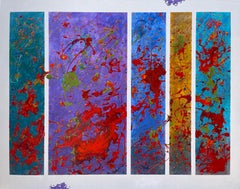Items Similar to Abstract Dreams landscapes 003
Want more images or videos?
Request additional images or videos from the seller
1 of 14
Juan Jose GarayAbstract Dreams landscapes 0032025
2025
$529.13
£385.15
€440
CA$720.19
A$805.58
CHF 419.23
MX$9,916.99
NOK 5,333.47
SEK 5,003.85
DKK 3,348.50
Shipping
Retrieving quote...The 1stDibs Promise:
Authenticity Guarantee,
Money-Back Guarantee,
24-Hour Cancellation
About the Item
Mi obra, creada con oleos, refleja una exploración abstracta y vibrante del espíritu humano. La elección de colores vivos y las formas entrelazadas capturan la complejidad emocional y la profunda introspección. Busqué transmitir la interconexión de nuestras experiencias y emociones, un remolino de vida y energía que invita al espectador a reflexionar profundamente. Esta pintura aportará un toque energético y pensativo a cualquier espacio.
- Creator:Juan Jose Garay (1970, Spanish)
- Creation Year:2025
- Dimensions:Height: 15.75 in (40 cm)Width: 11.82 in (30 cm)Depth: 0.12 in (3 mm)
- Medium:
- Movement & Style:
- Period:
- Condition:
- Gallery Location:LAS ROZAS DE MADRID, ES
- Reference Number:1stDibs: LU2408216273792
Juan Jose Garay
Juan José Garay es un artista plástico español nacido en 1970, conocido por su estilo en la técnica abstracta y la pintura en movimiento. Desde joven mostró un gran interés por el arte y la creatividad, lo que lo llevó a estudiar con grandes maestros como Amadeo Roca para su ingreso en Bellas Artes en la Universidad Complutense de Madrid. Durante su formación, Garay se sintió atraído por el arte abstracto y comenzó a experimentar con técnicas de pintura en movimiento. Estas técnicas, que involucran el uso de movimientos corporales para crear gestos y trazos en la pintura, se convirtieron en una parte integral de su estilo artístico único.
Juan Jose Garay comenzó a exhibir su obra en galerías de arte y Centros Culturales de España y Europa. Su estilo abstracto y dinámico se hizo rápidamente popular entre los amantes del arte contemporáneo, y sus obras comenzaron a ser reconocidas por su originalidad y belleza.
Además de la pintura, Garay también se ha dedicado a colaborar con arquitectos y diseñadores de interiores para crear piezas de arte que complementan el ambiente en el que se encuentran.
Su obra también ha sido adquirida por coleccionistas privados y museos de todo el mundo.
En resumen, Juan José Garay es un artista plástico español cuyo estilo se caracteriza por la técnica abstracta y la pintura en movimiento. Su obra ha sido reconocida por su originalidad y belleza, y se ha exhibido en galerías y museos de todo el mundo.
About the Seller
5.0
Vetted Professional Seller
Every seller passes strict standards for authenticity and reliability
1stDibs seller since 2023
11 sales on 1stDibs
- ShippingRetrieving quote...Shipping from: LAS ROZAS DE MADRID, Spain
- Return Policy
Authenticity Guarantee
In the unlikely event there’s an issue with an item’s authenticity, contact us within 1 year for a full refund. DetailsMoney-Back Guarantee
If your item is not as described, is damaged in transit, or does not arrive, contact us within 7 days for a full refund. Details24-Hour Cancellation
You have a 24-hour grace period in which to reconsider your purchase, with no questions asked.Vetted Professional Sellers
Our world-class sellers must adhere to strict standards for service and quality, maintaining the integrity of our listings.Price-Match Guarantee
If you find that a seller listed the same item for a lower price elsewhere, we’ll match it.Trusted Global Delivery
Our best-in-class carrier network provides specialized shipping options worldwide, including custom delivery.More From This Seller
View AllAbstract Dreams landscapes 001
By Juan Jose Garay
Located in LAS ROZAS DE MADRID, ES
Mi obra, creada con oleos, refleja una exploración abstracta y vibrante del espíritu humano. La elección de colores vivos y las formas entrelazadas capturan la complejidad emocional ...
Category
21st Century and Contemporary Abstract Expressionist Interior Paintings
Materials
Oil
Abstract Dreams landscapes 002
By Juan Jose Garay
Located in LAS ROZAS DE MADRID, ES
Mi obra, creada con oleos, refleja una exploración abstracta y vibrante del espíritu humano. La elección de colores vivos y las formas entrelazadas capturan la complejidad emocional ...
Category
21st Century and Contemporary Abstract Expressionist Interior Paintings
Materials
Oil
Blue Dream Landscape 03
By Juan Jose Garay
Located in LAS ROZAS DE MADRID, ES
Title: "Blue Dream Landscape"
On the canvas, a world of tranquility and serenity emerges, where shades of blue and white intertwine in a harmonious dance that captivates the viewer....
Category
21st Century and Contemporary Abstract Expressionist Interior Paintings
Materials
Oil
Blue Dream Landscape 05
By Juan Jose Garay
Located in LAS ROZAS DE MADRID, ES
Title: "Blue Dream Landscape"
On the canvas, a world of tranquility and serenity emerges, where shades of blue and white intertwine in a harmonious dance that captivates the viewer....
Category
21st Century and Contemporary Abstract Expressionist Interior Paintings
Materials
Oil
Blue Dream Landscape 08
By Juan Jose Garay
Located in LAS ROZAS DE MADRID, ES
Title: "Blue Dream Landscape"
On the canvas, a world of tranquility and serenity emerges, where shades of blue and white intertwine in a harmonious dance that captivates the viewer....
Category
21st Century and Contemporary Abstract Expressionist Interior Paintings
Materials
Oil
Blue Dream Landscape 02
By Juan Jose Garay
Located in LAS ROZAS DE MADRID, ES
Title: "Blue Dream Landscape"
On the canvas, a world of tranquility and serenity emerges, where shades of blue and white intertwine in a harmonious dance that captivates the viewer....
Category
21st Century and Contemporary Abstract Expressionist Interior Paintings
Materials
Oil
You May Also Like
"Sessún" Abstracted Landscape Painting
Located in Westport, CT
This large horizontal abstract landscape statement painting by Kelly Rossetti features a cool blue palette with deep charcoal and ...
Category
2010s Abstract Abstract Paintings
Materials
Canvas, Oil
Paysage (Ref 18085) (Abstract Painting)
By Martin Reyna
Located in London, GB
Paysage (Ref 18085) (Abstract Painting)
Oil on canvas - Unframed.
Martín Reyna is an Argentinian-born abstract painter living in Paris, France. His gestural abstract paintings deli...
Category
2010s Abstract Abstract Paintings
Materials
Canvas, Oil
I. Cahue landscape original abstract acrylic canvas painting
By Isidro Cahue
Located in CORAL GABLES - MIAMI, FL
"landscape original abstract acrylic canvas painting
Artwork by Spanish artist ISIDRO CAHUE.
The personality of the artist is reflected in different fields of art. His concern f...
Category
Late 20th Century Abstract Abstract Paintings
Materials
Cotton Canvas, Acrylic
Landscapes of the Soul and of the Mind XVII , Abstract Expressionist Landscape
Located in Doylestown, PA
"Landscapes of the Soul and of the Mind XVII " is a 44 x 56 inches, original, abstract landscape by American master colorist painter Al Lachman. The artwork is a gallery wrapped canvas, signed "Lachman" in the lower right. It is part of the artist's series "Landscapes of the Soul and of the Mind".
The artist puts his thumb upon the pulse of life and records it. In that mystical beat lies the unknown, and he would but make it known. Being both, innovator and spectator, he exists as an intrinsic part of that rhythm.
Each painting begins with a premise, and I rarely use the same one twice. It is based on what I see and what I am feeling at that moment. I do not think that painting is about technique. It is about a particular perception of the world around us. The premise creates the periphery of my intent. It is a limitation that gives birth to the creative forces within. - Al Lachman
Born in 1936 in the Bronx, NY, Alan Lachman...
Category
2010s Abstract Expressionist Abstract Paintings
Materials
Canvas, Acrylic
"Meditative Memories" Abstract Landscape Painting
Located in Westport, CT
This large abstract statement painting by Kelly Rossetti is made with oil paint on gallery wrapped canvas. It features cool blue palette with light pink and dark charcoal accents and...
Category
2010s Abstract Abstract Paintings
Materials
Canvas, Oil
"Coastal Sky, " Contemporary Abstract Painting
By Teodora Guererra
Located in Westport, CT
This contemporary abstract painting by Teodora Guererra features a light, coastal palette of blue, light grey and off-white. The artist applies thick layers of oil paint in sweeping, horizontal gestures to create a thick, textured surface. The painting is made on gallery wrapped canvas and is wired and ready to hang. Signed by the artist on the back of the canvas.
Teodora Guererra’s abstract artistic vision has evolved throughout her years spent painting and teaching in Fairfield County, Connecticut; Tucson, Arizona, and upstate New York. Arizona’s naturally radiant landscape and arid climate led her to experiment with rich under-painting and vivid color; while the shifting seasons of the East Coast inspired Guererra to pursue dripping and staining techniques. Her focus has always been pushing the limits through experimentation with new materials.
“As an artist, painting can be tormenting and sublime at the same time," the artist says of her work. "I'm a big risk taker, experimenting with different materials to layer, stain and saturate color on large canvases. My most successful work looks as if it happened all at once. It sometimes takes 7 or more paintings to produce a successful one and then it's a beautiful thing."
Guererra received her undergraduate and graduate Art degrees from Southern Connecticut University, The College of Saint Rose and Skidmore College. Guererra’s paintings can be found in public and private collections across the U.S., including the Allmen Health and Wellness Center for Women in New York and SUNY Brockport, NY, William & Sonoma, San Francisco, CA. Her influences are Pat Steir, John McCracken, Helen Frankenthaler, Donald Jud, Bernar Venet, Agnes Martin and Brian Rutenberg...
Category
2010s Abstract Abstract Paintings
Materials
Canvas, Oil
More Ways To Browse
Man Horse Sculpture
Marc Chagall 1979
Maurice Model
Picasso Lithographs 1964
Piranesi Etchings
Rock N Roll Art
Sex Sculpture
Tool Posters
Vintage Swimmer Art
Contact Sheet Photography
Dog Lithographs
Ecole Des Beaux Arts Architectural Drawings
Marc Chagall 1975
Pablo Picasso Signature
Panther Print
Subway Graffiti
Vintage Dresses With Gloves
1908 Posters
